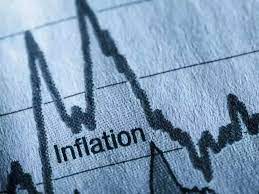NEW DELHI, Jan 14: India’s retail inflation during the month of December was at 5.72 per cent, according to the latest data released by the ministry of statistics.
The latest figures, released on Thursday, showed a marginal decline and further moderation in retail inflation compared to the previous month. India’s retail inflation rate based on Consumer Price Index was 5.88 per cent in November from 6.77 per cent during October. Retail inflation in India had remained above 6 per cent till October for over three quarters, which was beyond RBI’s comfort zone.
Following are some of the views from analysts and experts on the latest retail inflation data:
Rajani Sinha, Chief Economist at CareEdge:
Retail inflation has eased more than expected in December, bringing the headline print below the RBI’s upper tolerance for the second straight month. The softening is largely attributed to the decline in prices of vegetables, that helped offset the rise in costs of other products of the food basket such as cereals, milk and meat.
However, the concern is that core CPI inflation remains sticky above 6 per cent, with evidence of high inflation in services sector. From the policy perspective, we believe that RBI’s move at the February monetary policy meeting will be a close call with core inflation remaining sticky.
V K Vijayakumar, Chief Investment Strategist at Geojit Financial Services:
Retail inflation at 5.72 per cent in December confirms the downtrend which started in November. This will enable the RBI to go slow on rate hikes.
Vijay Kalantri, Chairman of MVIRDC World Trade Center, Mumbai:
The second consecutive month of decline in retail inflation is in line with RBI’s projection and it is largely led by moderation in food price inflation, particularly contraction in vegetable price inflation.
We expect RBI to hold policy rates in the forthcoming policy meeting in February 2023, given the consistent moderation in retail inflation.
CRISIL Market Intelligence and Analytics:
The slowdown (in inflation) was largely led by sharp fall in vegetable prices with the arrival of new crops in winter. But pressure points remain from food (cereals, milk, pulses) and core inflation.
Retail inflation undershot expectations due to a sharp correction in vegetable prices, as most other major categories saw a year-on-year rise in prices. (ANI)
Trending Now
E-Paper


